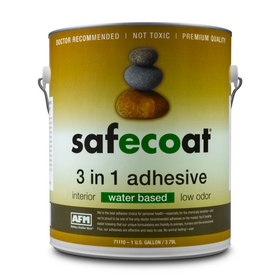
Tiny home versus tiny footprint: benefits of building vertical
Last Updated: Apr 13, 2025What’s not to love about tiny homes? They’re adorable, they’re mobile, they’re inexpensive and they’re usually energy efficient. Currently holding space as the darlings of the sustainable world, they only average about 400 square feet, and there are as many iterations as there are personalities. Some folks are even proving that they can sustain a family of five.
But let’s face it: not everyone is cut out to live in 400 square feet. And while the design phase can feel really exciting: posting photos of the process on social and finding the perfect place for all of your recently reduced chachkas, the reality soon sinks in. Tiny homes are just that: tiny. So while they have a vast range of amazing benefits on the sustainability front, the one big drawback that a lot of folks quickly discover is that they feel like they are on an extended camping trip. One that never ends.
So what are your options? There is a way to combat urban sprawl and building more houses than we need. If a tiny home is not for you, why not go for a tiny footprint?
Table of Contents
- Good Things DO Come in Small Packages
- But Does Size Still Matter?
- Canada’s Urban Sprawl: Nowhere to Go But Up

Good Things DO Come in Small Packages
Called infill housing, shaft houses, skinny houses and narrow houses, whatever you call them, they have one thing in common: they take up a very small footprint. what many would call a step up from a tiny home, infill housing makes use of the space that is available, and while they aren’t sprawling by any stretch of the imagination, they are smaller. As usual, we can look to Japan as an example: even in a country where living in small spaces is no great leap, they do narrow right with these stunning houses, built on 300 square foot lots.
Narrow houses, which are typically no more than 25 feet wide, take up less land, are cheaper to build, more energy-efficient, and have some seriously jaw-dropping designs. Take inspiration from totem house in Toronto: Atelier rzlbd designed this three-story home that embraces the light and makes use of every available inch. And let’s not forget, every narrow house needs a set of stairs: the contemporist shows us how to uplevel your stair game with some stair porn for small spaces.

But Does Size Still Matter?
With the current world population sitting at 7.6 billion and predicted to reach 8.6 billion in 2030, the ‘build big’ era needs to end, and it all starts by changing mindsets.
The fact is since the 1950s, North Americans have been building ‘more’ house than is actually necessary, and for all the wrong reasons. The overall trend saw family size shrinking while houses got bigger. And let’s not forget the pools. This all seemed to culminate in the brass and glass, bigger-better-faster-more decade: the 80’s. Three car garages, swimming pools, and tennis courts became a life goal. Those pools? They quickly became nothing more than an economic boost for local pool maintenance companies. Many were also living beyond their means.
While tiny homes are providing a learning experience in the ‘how little is enough’ mindset, building vertical leaves a lot more leeway in terms of design, space, and stature. But many North Americans are still confused by the concept.
Canada’s Urban Sprawl: Nowhere to Go But Up
Canada is no stranger to the negative effects of urban sprawl. With more than our fair share of natural beauty and major cities where housing costs are becoming some of the most expensive in the world, it’s no surprise that much of the population still opt for less expensive homes in areas outside of the densely populated cities. Hence, urban sprawl. So you want to stay in the city, a tiny home isn’t in your future and you don’t want to sink your investment into a McMansion – narrow homes are the answer.
Joy Wood
Joy grew up in the natural beauty of the North Okanagan, nestled near the foot of the Monashee Mountains. Hailing from a family of home builders, both the environment and home construction became closely intertwined in her youth. Today, she and her builder hubby are raising their family in Vancouver, where she avidly follows the current sustainable construction trends as the city aims for the title of ‘Greenest City’ by 2020.










